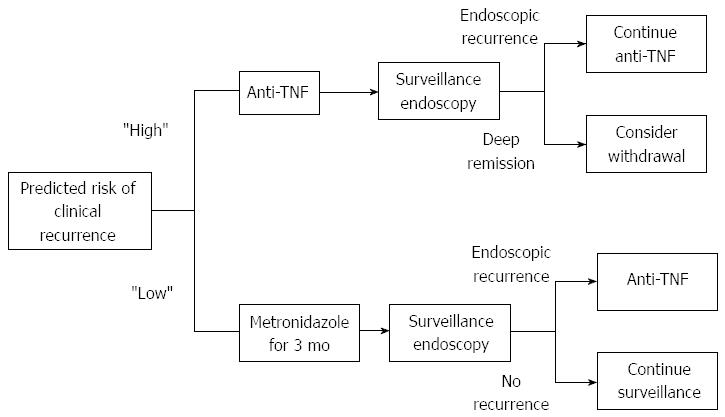Copyright
©2014 Baishideng Publishing Group Co.
World J Gastroenterol. Feb 7, 2014; 20(5): 1147-1154
Published online Feb 7, 2014. doi: 10.3748/wjg.v20.i5.1147
Published online Feb 7, 2014. doi: 10.3748/wjg.v20.i5.1147
Figure 1 Suggested algorithm for deciding when to administer post-operative prophylaxis based on effectiveness of treatment.
Other considerations such as cost and prior success or failure of treatment need to be individualized. Patients at high risk are those who have 2 or more of the following risk factors: smoking, penetrating disease, history of prior resection, and myenteric plexitis. Based on the available evidence, we suggest first surveillance endoscopy be done at 6 mo time for all patients. Treatment escalation at 6 mo should be considered for all patients with evidence of endoscopic recurrence (Rutgeerts ≥ i2). For select patients who achieve and maintain deep remission on therapy (Rutgeerts of i0 with normal histology), consideration can be given to de-escalation of therapy to either thiopurine alone or close monitoring.
- Citation: Vaughn BP, Moss AC. Prevention of post-operative recurrence of Crohn’s disease. World J Gastroenterol 2014; 20(5): 1147-1154
- URL: https://www.wjgnet.com/1007-9327/full/v20/i5/1147.htm
- DOI: https://dx.doi.org/10.3748/wjg.v20.i5.1147









